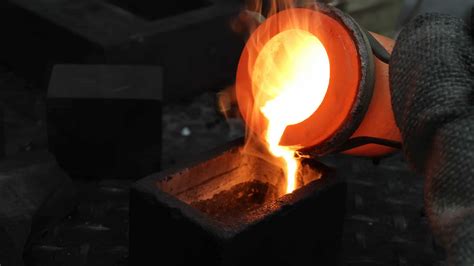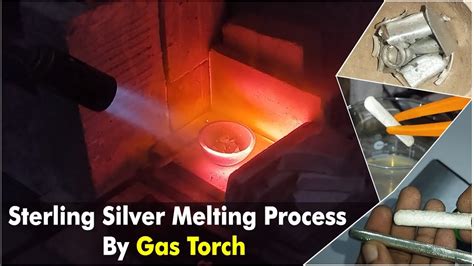average house fire temp vs precious metal Golds melting point is at 1064°C. Silvers is at 961.8°C. Whereas the average house fire burns at around 600°C. So at a glance it looks like both silver and gold should survive the “average” house fire. What Does A Star On A Michigan Home Mean? These metal stars are called 'barn stars' and you may also see them on barns in Michigan. According to House Digest, these stars were painted directly onto barns and were later handcrafted from metal or wood.What do metal stars on houses actually mean? These metal stars allegedly originate from German settlers who came to Pennsylvania between .
0 · will gold melt in house fire
1 · melting silver in house fire
2 · house fire survival rate
3 · house fire melting temperature
4 · house fire melting point
5 · highest melting point for house fire
6 · gold melting point in house fire
7 · does gold survive a house fire
When you see a star on a house, it’s important to know that it’s more than just a decorative piece. These designs, often referred to as barn stars, are believed to bring good luck and protection to the household.
Precious metals like gold and silver have melting points of 1,950 and 1,700 degrees Fahrenheit, respectively – meaning they could potentially survive an average house fire. Even diamonds, with their impressive melting .

lowes electrical junction boxes
Golds melting point is at 1064°C. Silvers is at 961.8°C. Whereas the average house fire burns at around 600°C. So at a glance it looks like both silver and gold should survive the “average” house fire.First a couple of facts about storing gold and silver and fires. Gold's melting point is at 1064°C. Silver's is at 961.8°C. Whereas the average house fire burns at around 600°C. So at a glance . This article will examine gold’s melting point, typical house fire temperatures, and the factors that could potentially damage gold in a fire. We’ll also provide tips on finding gold .

will gold melt in house fire
The melting point of pure gold is 1,948°F (1,064°C), which is higher than the typical maximum temperature of most house fires. So in most cases, solid gold items are unlikely to . To put this into perspective an average house fire will usually burn at a temperature somewhere between 1,000 and 2,000 degrees Fahrenheit though this is pretty variable depending on the combustible materials present .
According to the National Institute for Fire and Safety Training, the average house fire burns at about 1,100°F. That’s the same in the middle of a Utah winter, or the middle of summer. A typical house fire will range between 900°F and 1,800°F, depending on the kind of fire and any factors, such as accelerants. A wildfire, like those that have been scorching . The average house fire burns at about 1,100 degrees Fahrenheit, which isn’t hot enough to destroy most metals and earthly-made substances. And if an item is well placed . Gold and silver typically have melting points higher than the average house fire temperature. The maximum temperature of a house fire can sometimes reach levels capable of melting these metals. Protective measures can increase the chances of .
melting silver in house fire
house fire survival rate
Precious metals like gold and silver have melting points of 1,950 and 1,700 degrees Fahrenheit, respectively – meaning they could potentially survive an average house fire. Even diamonds, with their impressive melting point of 6,000 degrees Fahrenheit, are not immune to damage from fires due to rapid temperature changes.

Golds melting point is at 1064°C. Silvers is at 961.8°C. Whereas the average house fire burns at around 600°C. So at a glance it looks like both silver and gold should survive the “average” house fire.
First a couple of facts about storing gold and silver and fires. Gold's melting point is at 1064°C. Silver's is at 961.8°C. Whereas the average house fire burns at around 600°C. So at a glance it looks like both silver and gold should survive the “average” house fire.
This article will examine gold’s melting point, typical house fire temperatures, and the factors that could potentially damage gold in a fire. We’ll also provide tips on finding gold after a fire, protecting your gold possessions, and insuring your gold in case the worst does happen. The melting point of pure gold is 1,948°F (1,064°C), which is higher than the typical maximum temperature of most house fires. So in most cases, solid gold items are unlikely to melt. To put this into perspective an average house fire will usually burn at a temperature somewhere between 1,000 and 2,000 degrees Fahrenheit though this is pretty variable depending on the combustible materials present in your home. According to the National Institute for Fire and Safety Training, the average house fire burns at about 1,100°F. That’s the same in the middle of a Utah winter, or the middle of summer.
A typical house fire will range between 900°F and 1,800°F, depending on the kind of fire and any factors, such as accelerants. A wildfire, like those that have been scorching California, can reach average temperatures of 1,472°F and up to 2,192°F in extreme cases. The average house fire burns at about 1,100 degrees Fahrenheit, which isn’t hot enough to destroy most metals and earthly-made substances. And if an item is well placed and small in size, its chances of survival increase drastically.
Gold and silver typically have melting points higher than the average house fire temperature. The maximum temperature of a house fire can sometimes reach levels capable of melting these metals. Protective measures can increase the chances of . Precious metals like gold and silver have melting points of 1,950 and 1,700 degrees Fahrenheit, respectively – meaning they could potentially survive an average house fire. Even diamonds, with their impressive melting point of 6,000 degrees Fahrenheit, are not immune to damage from fires due to rapid temperature changes.
Golds melting point is at 1064°C. Silvers is at 961.8°C. Whereas the average house fire burns at around 600°C. So at a glance it looks like both silver and gold should survive the “average” house fire.First a couple of facts about storing gold and silver and fires. Gold's melting point is at 1064°C. Silver's is at 961.8°C. Whereas the average house fire burns at around 600°C. So at a glance it looks like both silver and gold should survive the “average” house fire. This article will examine gold’s melting point, typical house fire temperatures, and the factors that could potentially damage gold in a fire. We’ll also provide tips on finding gold after a fire, protecting your gold possessions, and insuring your gold in case the worst does happen.
The melting point of pure gold is 1,948°F (1,064°C), which is higher than the typical maximum temperature of most house fires. So in most cases, solid gold items are unlikely to melt.
house fire melting temperature
To put this into perspective an average house fire will usually burn at a temperature somewhere between 1,000 and 2,000 degrees Fahrenheit though this is pretty variable depending on the combustible materials present in your home. According to the National Institute for Fire and Safety Training, the average house fire burns at about 1,100°F. That’s the same in the middle of a Utah winter, or the middle of summer. A typical house fire will range between 900°F and 1,800°F, depending on the kind of fire and any factors, such as accelerants. A wildfire, like those that have been scorching California, can reach average temperatures of 1,472°F and up to 2,192°F in extreme cases.
house fire melting point
The following sheet metal gauge size reference chart gives the weight and thickness of sheet metal given as a "gauge" (sometimes spelled gage) and indicates the standard thickness of sheet metal and wire.For most materials, as the gauge number .
average house fire temp vs precious metal|house fire melting point